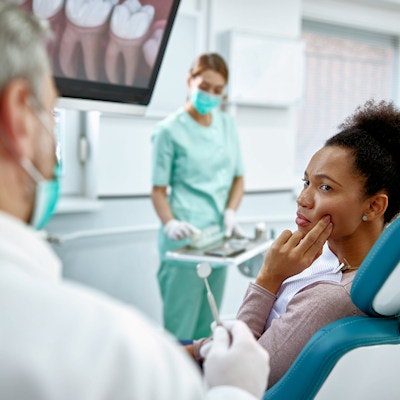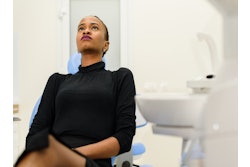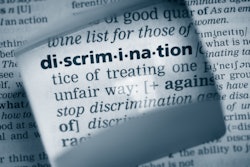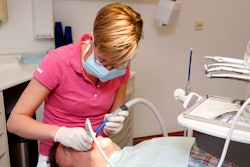
Elevated dental anxiety in Black women in the U.S. was linked to high exposure to perceived experiences of racism in daily life and throughout their lifetimes, according to a study published in Community Dentistry and Oral Epidemiology.
Lifetime racism was linked with a 17% spike in the prevalence of high dental anxiety for each additional affirmative response to questions about unfair treatment Black women had experienced on the job, in housing, and by police due to race. About 70% of Black women who experienced mistreatment in all three scenarios were more likely to have high dental anxiety, the authors wrote.
"Dental anxiety may be a pathway through which perceived experiences with racism may impact oral health outcomes," wrote the authors, led by Brenda Heaton, PhD, MPH, of the Henry M. Goldman School of Dental Medicine at Boston University in Massachusetts (Community Dent Oral Epidemiol, August 14, 2022).
Though it has been well-documented that dental fear and anxiety are known determinants of delaying or avoiding dental care, little is known about how it affects racial/ethnic populations. These patients not only experience a disproportionate burden of poor oral health outcomes, but the structural and social factors responsible for producing these inequities are understudied. Through a conduit of dental fear and anxiety, episodes of racism over patients' lifespans may contribute to poor dental outcomes.
To investigate Black women's perceived experiences with racism and dental fear and anxiety, researchers conducted a study using data from the Black Women's Health Study (BWHS), a U.S.-based prospective cohort, that was collected in 2014. The participants lived in Massachusetts and responded to a mailed oral health questionnaire that included the Index of Dental Anxiety and Fear instrument.
A total of 484 women responded to the questions. Demographics and health information, as well as reported experiences of racism, which were obtained via BWHS questionnaires between 1995 and 2009 were merged with dental anxiety and fear data. Correlations were investigated via prevalence ratios calculated using log-binomial regression models.
One-quarter of the participants reported exposure to everyday racism that occurred weekly on average. Meanwhile, 13% of participants reported exposure to three experiences of unfair treatment due to their race over their lifetime, according to the study.
High dental anxiety was pervasive in nearly 1 in 5 Black women in the U.S. Lifetime racism was linked with a 17% spike in the prevalence of high dental anxiety for each additional affirmative response in the fully adjusted model (prevalence ratio [PR] = 1.17; 95% confidence interval [CI]: 0.94, 1.45).
Black women were 72% more likely to have high dental anxiety (PR = 1.72; 95% CI: 1.03, 2.88) if they answered yes to three questions asking if they had ever been treated unfairly due to race on the job, in housing, and by the police, the authors wrote.
In fully adjusted models, the quartile with the highest exposure to everyday racism was associated with an 8% increase in the prevalence of high dental anxiety, and for the quartile with the second highest exposure, the increase was 20% compared to the quartile of Black women who reported the lowest exposure to everyday racism. However, these estimates aren't very precise due to the low prevalence of the outcome and the covariates in these categories, the authors wrote.
The study had limitations, including that exposure to racism was assessed using only two measures. This may restrict the ability to observe the true magnitude of correlations, since racism is a multifaceted phenomenon, they wrote.
"These findings present an important possibility that racism and dental anxiety may play a role in observed racial disparities in oral health outcomes," Heaton and colleagues wrote.




















